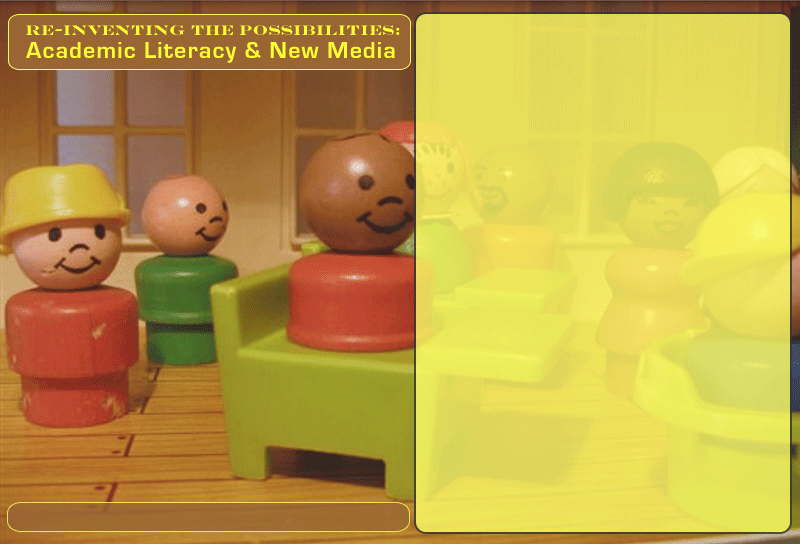
In this section I will discuss an undergraduate writing course in which new media texts are read and developed. The general course title was 'Perspectives in Writing and Rhetoric,' and I gave it the subtitle 'The Rhetorics of Mobility.' While it was a writing-intensive course, I wanted students to produce new media texts as a result of investigating how mobility affected writing practices. The textbook I chose, ROAM: Reader on the Aesthetics of Mobility, provided students with a graphic look at how mobility affected the aesthetics of travel, architecture, industry, and the distribution of goods; indeed, almost every aspect of life in an industrialized society.
Among the objectives I had for the course were that students would understand mobility as a concept, and that they would be able to identify its material instantiations. In order to accomplish the first objective, we investigated mobility as it is enabled through various technologies from the train and the automobile to the Internet and mobile phones. To accomplish the second objective, we spent a great deal of time on what our textbook called the 'aesthetics of mobility,' or the affect of mobility on the way we perceive meaning in the world. Thus, we spent a great deal of time discussing travel, looking at how speed has affected roadside advertisements, and investigating concrete examples of how mobility affects architecture, consumerism and the distribution of goods, work practices, writing practices, and the sense of identity and place.
The example provided next is from an assignment where I asked students to represent roughly five hours of a typical day through a travelogue and map. I asked them to incorporate at least one multimodal element, including audio recordings of various locations or movements, pictures of locations (especially those that depict motion and time), video taken from travels, as well as textual and narrative descriptions of places and travels.
Go back to the last node.